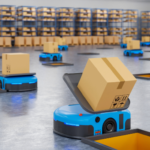So, you have kicked off your personalization program utilizing the basics of previous purchase data, the understanding of how your customer got to your website or maybe customer personas. But as your program becomes more sophisticated, there are some other elements to consider:
GeoIP
You wouldn’t attempt to sell winter coats to Floridians during the middle of summer or shorts to New Yorkers in the middle of winter would you? Understanding where your customer is physically located can be a leading indicator of which products to offer.
Demographics
Using customer demographic information such as age, gender, ethnicity, nationality, and income level can help you build out your customer fingerprint. You will have much better conversion rates once you can distinguish from a female college student and a retired grandfather and market to them accordingly.
Behavioral Marketing
The customer’s behavior and interactions on your website should provide excellent clues of who they are and what interests them. As customers are searching, clicking, and browsing your website you should be taking note and adapting their experience based upon their interactions.
Predictive Intelligence (PI)
Using algorithmic marketing to predict a customer’s intent is a key component in a Personalization strategy. These mathematical models are designed to best predict the probability of a particular outcome and therefore lead to incremental sales.
Social Login
Enabling social login unleashes a plethora of information about your customers. You can learn their what their interests are, what they hashtag, and even personal information such as their birth date, age, and their favorite sports teams.
Cross-Device Marketing
Today individuals switch back and forth between devices incessantly. They are on their desktop computers at work and on their phones and tablets as they are stuck in traffic, out dining and shopping, and as they sit on the couch watching television. Being able to combine experiences across devices and remove the friction from starting the buying process over, leads to higher conversion rates and improved customer experiences.
Machine Learning
As more and more interactions and searches occur on your website, the system learns over time what produces the best outcome and desired results. For instance, instead of suggesting ‘parents’ when you type P-A in the search bar, a machine learning system spots that users are more likely to be searching for ‘pants’ and much more likely to purchase when this term is rendered.
Dynamic Email Content
Email content can now be changed based upon user’s preferences or when a user opens the email. Your customer clicks on an email from a couple of weeks ago and the sale has already expired? It’s ok, a new promotion is now displayed in the email. Sold out of that stainless-steel grill when the customer opens the email? Not a problem, other grills will now be featured within the email.
It’s ok if your Strategy is incremental
A few years ago, I had a client that when you performed a search on their website and the query returned null results they simply displayed a message that stated, ‘We don’t have what you are looking for, check back again soon’. Really? You don’t have any products that a customer might be interested? Even worse you are blatantly telling customers to leave your website and not even providing them with other links within your website?
While this is an extreme case, the take-away rings true and is transcendent of many areas of digital marketing – You can make slight improvements over time to improve the customer experience incrementally.
With this client, the first step in the incremental improvement process was just to add some products, any products to display during a null search result. The client had a ton of interesting merchandise, so we rendered any available products even if they are not related to their search and include links to product other product categories.
During the next phase, we attempted to improve the search’s algorithm so that even if the system didn’t completely comprehend the initial search, we would still offer suggestions for other products that seemingly were closely related.
For the long-term strategy, we continually tweaked and tested the search algorithm and instituted machine learning so that we could improve the customer experience even more.
While many personalization tools offer comprehensive programs that integrate all facets of your website, it might be better to employ a phased approach. At the end of the day your incremental improvement personalization strategy should look something like this — Segmentation giving away to Personalization leading to Individualization in an attempt to achieve 1:1 Engagement. These are monumental changes that won’t take place overnight, so incremental improvement is the best way to go. In the final part of this three-part series of digital personalization, I will delve into the future of personalization technologies and where the market is heading. At Sophelle, we can help you navigate the personalization landscape, develop a personalization roadmap, select the right personalization software and tools, and even oversee the implementation and manage the execution. Contact us today to learn more.
Contributed by Timm Henderlight




